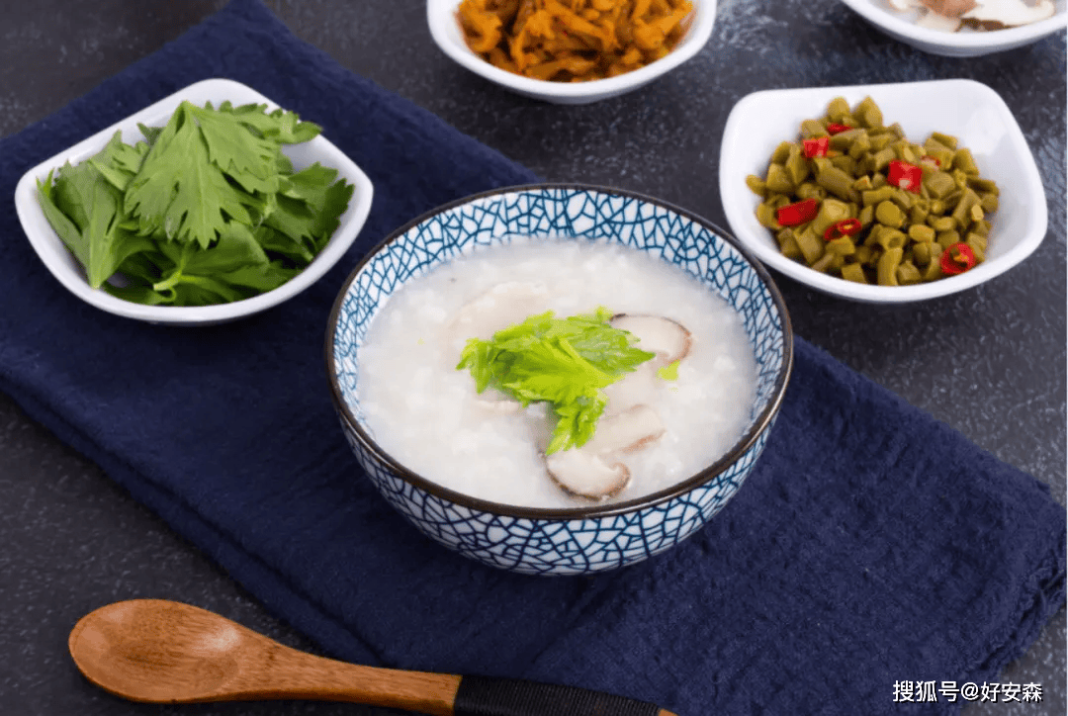When managing blood sugar levels, people with diabetes do need to pay attention to food choices to avoid spikes in blood sugar levels. For example, the following four types of food should be consumed sparingly to prevent rapid blood sugar spikes.
White Congee
We often say that people with diabetes should “eat dry rather than watery”. Those with experience in diabetes management know that consuming a bowl of white congee can quickly raise blood sugar levels.
This is because white congee has a high glycemic index (GI value), meaning it can rapidly release glucose into the bloodstream during digestion, causing a quick rise in blood sugar levels.
Although it is advised for people with diabetes to avoid watery congee, it’s not an absolute prohibition. Especially in summer when craving something watery, one can replace white congee with oatmeal congee, brown rice congee, or porridge mixed with legumes. These foods are rich in dietary fiber, which can slow down digestion and help stabilize blood sugar levels. It is also important to consume them with vegetables or protein-rich foods.
Fruit Corn
While corn is considered a coarse grain and can be a staple for people with diabetes, there is a type of fruit corn that is not suitable for them. This fruit corn has a sugar content of around 30%, higher than regular fruits, making it taste tender and sweet, similar to fruit characteristics. In contrast, regular corn is harder in texture and may taste blander and more starchy.
Old corn with a higher content of dietary fiber (old corn feels firm when touched, has yellowing leaves, and slightly shrunken kernels. Within the same batch of corn, the larger the kernels, the older the corn).
However, this type may have a less appealing taste, so individuals can choose based on their actual blood sugar levels. Also, it is advisable not to remove the corn silk, as soaking them in water and consuming them can aid in bile secretion, diuresis, and assist in blood sugar control.
Pastries and Snacks
Pastries are usually made through multiple processes. To cater to popular taste preferences, businesses often add ingredients like cream, egg whites, jam, white sugar, etc. Given that pastries are primarily made from grains, legumes, and potatoes, they tend to have high carbohydrate content. The glycemic index of pastries is generally high, and their low nutritional value is not conducive to the health of people with diabetes.
While people with diabetes can consume snacks in moderation, it is advisable to choose healthy snacks that are low in sugar, low in fat, and high in fiber, such as nuts, tofu, fresh fruits, or dairy products. When making pastries at home, one can use sugar substitutes instead of cane sugar and whole wheat flour instead of refined flour to satisfy taste while considering blood sugar management.
Desserts and Cold Drinks
Many desserts and cold drinks, such as ice cream, cakes, sugary beverages, contain a large amount of added sugar, which is rapidly absorbed by the body, leading to a rapid increase in blood sugar levels, which is detrimental to blood sugar control in people with diabetes.
In addition to sugar, many desserts are high in calories and fats, which not only contribute to weight gain but can also lead to abnormal blood lipid levels.
If individuals with diabetes feel like indulging, they can opt for desserts made with sugar substitutes (such as erythritol, xylitol, etc.), which have a lower impact on blood sugar and provide sweetness without adding to the blood sugar burden.
There are now many low-sugar or sugar-free cold drinks and desserts designed specifically for people with diabetes available in the market. When purchasing, it is important to check food labels to confirm sugar content.
After trying new desserts or cold drinks, it is essential to monitor blood sugar responses to understand their impact on blood sugar levels. Accordingly adjust dietary plans based on individual circumstances.


